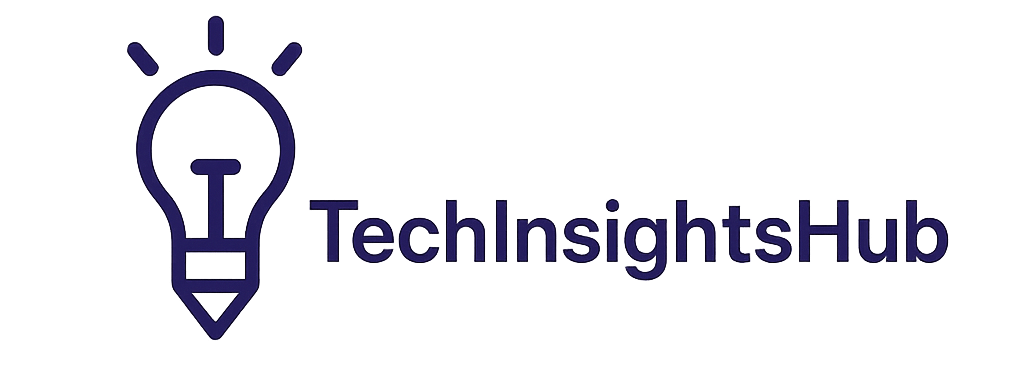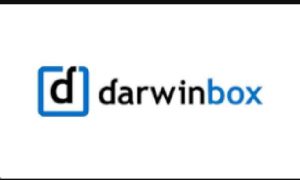Web application security has become a critical concern for businesses worldwide. Hackers target vulnerabilities in web applications more frequently than ever before. The Open Web Application Security Project (OWASP) provides essential resources to combat these threats.
OWASP offers a comprehensive framework for identifying and fixing security vulnerabilities. Their guidelines help developers build secure applications from the ground up. Organizations worldwide rely on OWASP standards to protect their digital assets.
Security breaches cost companies millions of dollars annually. Poor security practices expose sensitive data and damage brand reputation. OWASP’s methodologies help prevent these costly incidents before they occur.
Server-Side Request Forgery (SSRF)

Server-Side Request Forgery represents one of the most dangerous security vulnerabilities today. Attackers exploit SSRF to make unauthorized requests from vulnerable servers. These attacks can access internal systems that should remain protected.
SSRF attacks typically target cloud metadata services and internal APIs. Hackers trick servers into making requests to unintended destinations. The server becomes an unwitting accomplice in the attack process.
OWASP provides specific guidance for preventing SSRF vulnerabilities. Input validation stands as the first line of defense against these attacks. Developers must validate and sanitize all user-supplied URLs and parameters.
Whitelist approaches work better than blacklist methods for SSRF prevention. Allow only known, safe destinations for server-side requests. Block private IP ranges and localhost addresses from external input.
Network segmentation adds another layer of protection against SSRF attacks. Isolate web servers from internal systems whenever possible. Use firewalls to restrict outbound connections from web applications.
Security Misconfigurations
Security misconfigurations plague web applications across all industries and platforms. Default passwords, unnecessary services, and improper permissions create security holes. These issues often stem from rushed deployments and insufficient security awareness.
Cloud platforms have introduced new configuration challenges for development teams. Misconfigured storage buckets expose sensitive data to unauthorized users. Database instances with weak access controls become easy targets.
OWASP emphasizes the importance of secure configuration practices throughout development. Regular security audits help identify configuration issues before they cause problems. Automated tools can scan for common misconfigurations continuously.
Configuration management should follow the principle of least privilege. Grant only necessary permissions to users and applications. Remove default accounts and change default passwords immediately after installation.
Documentation plays a crucial role in maintaining secure configurations. Keep detailed records of all security settings and changes. Regular reviews ensure configurations remain appropriate as systems evolve.
Cross-Site Scripting (XSS)
Cross-Site Scripting attacks inject malicious scripts into web applications. These scripts execute in users’ browsers without their knowledge or consent. XSS vulnerabilities affect millions of websites worldwide.
Three primary types of XSS attacks pose a significant threat to web applications today. Stored XSS persists malicious code in databases or files. Reflected XSS bounces malicious input back to users immediately.
DOM-based XSS manipulates client-side scripts without server involvement. Each type requires different prevention strategies and security controls. OWASP provides comprehensive guidance for addressing all XSS variants.
Input validation and output encoding form the foundation of XSS prevention. Validate all user input against expected formats and values. Encode output based on the context where data appears.
Content Security Policy (CSP) headers provide additional protection against XSS attacks. CSP restricts the sources from which browsers can load resources. Properly configured CSP can prevent most XSS attacks from succeeding.
Injection Attacks (SQL, NoSQL, LDAP, etc.) with OWASP
Injection attacks remain among the most common and dangerous security vulnerabilities. SQL injection attacks manipulate database queries through user input. NoSQL databases face similar risks from injection attacks.
LDAP injection targets directory services through crafted input strings. Command injection executes arbitrary system commands on vulnerable servers. Each injection type can compromise entire systems and data stores.
OWASP consistently ranks injection attacks as a top security concern. These attacks succeed when applications fail to properly validate user input. Parameterized queries provide the most effective defense against injection attacks.
Prepared statements completely separate SQL code from user data. This separation prevents attackers from modifying the query structure or logic. Object-relational mapping (ORM) frameworks often provide built-in protection against injection attacks.
Input validation should occur at multiple layers of the application. Client-side validation enhances the user experience but offers no security benefits. Server-side validation must validate all input regardless of source.
Broken Authentication
Authentication systems protect user accounts and sensitive application functions. Broken authentication allows attackers to compromise user identities and access controls. Weak passwords and poor session management contribute to authentication failures.
Multi-factor authentication significantly improves security for user accounts. SMS-based codes offer enhanced protection compared to passwords alone. Hardware tokens and biometric authentication offer even stronger security measures.
Session management requires careful attention to security details and implementation. Generate strong, random session identifiers for each user session. Invalidate sessions after logout and enforce reasonable timeout periods.
Password policies should strike a balance between security and usability for legitimate users. Require strong passwords but avoid overly complex requirements that frustrate users. Consider implementing password-less authentication methods where appropriate.
Account lockout mechanisms protect against brute force attacks on user credentials. Monitor failed login attempts and temporarily lock suspicious accounts. Implement rate limiting to slow down automated attack attempts.
Sensitive Data Exposure
Sensitive data exposure occurs when applications fail to protect confidential information. Credit card numbers, social security numbers, and personal data require special protection. Inadequate encryption and poor access controls lead to data breaches.
Data classification helps organizations understand what information needs protection. Not all data requires the same level of security controls. Focus protection efforts on the most sensitive and valuable information.
Encryption protects data both in transit and at rest effectively. Use strong encryption algorithms approved by security professionals. Manage encryption keys separately from encrypted data whenever possible.
Access controls should limit who can view sensitive information. Implement role-based access control (RBAC) to efficiently manage user permissions. Log all access to sensitive data for security monitoring purposes.
Data retention policies help minimize exposure risks over time. Delete sensitive data when it’s no longer needed for business purposes. Regular data purging reduces the potential impact of security breaches.
Broken Access Control
Access control mechanisms determine who can perform specific actions within applications. Broken access control allows users to access unauthorized functions or data. These vulnerabilities often result from poor design or implementation mistakes.
Vertical privilege escalation lets users access higher-level functions than intended. Horizontal privilege escalation allows access to other users’ data or accounts. Both scenarios represent serious security failures that require immediate attention.
OWASP recommends implementing access controls at multiple application layers. Check permissions at the presentation layer, business logic layer, and data layer. Consistent enforcement prevents bypass attempts through different attack vectors.
Default-deny policies provide stronger security than default-allow approaches. Explicitly grant access to resources rather than restricting specific actions. This approach reduces the risk of accidentally exposing sensitive functions.
Regular access reviews help identify and correct permission creep over time. Users often accumulate unnecessary permissions as their roles change. Periodic reviews ensure access rights remain appropriate for current responsibilities.
Cross-Site Request Forgery (CSRF)
Cross-site request forgery (CSRF) attacks trick users into performing unintended actions. Attackers exploit the trust that web applications have in authenticated users. CSRF attacks can transfer funds, change passwords, or modify account settings.
CSRF tokens provide adequate protection against these types of attacks. Generate unique, unpredictable tokens for each user session or form. Validate tokens on the server side before processing sensitive requests.
SameSite cookie attributes offer additional protection against CSRF attacks. These attributes control when browsers send cookies with cross-site requests. Proper configuration can prevent many CSRF attacks from succeeding.
Double-submit cookies provide an alternative CSRF protection mechanism. Send the same random value as both a cookie and request parameter. Server-side validation ensures both values match before processing requests.
User education helps prevent successful CSRF attacks in practice. Teach users to log out of sensitive applications after use. Warn against clicking suspicious links or visiting untrusted websites while authenticated.
Using Components with Known Vulnerabilities
Modern web applications rely heavily on third-party libraries and frameworks. These components often contain security vulnerabilities that attackers can exploit. Outdated components represent a significant risk to application security.
Software composition analysis tools help identify vulnerable components in applications. These tools scan project dependencies and flag known security issues. Regular scanning helps maintain awareness of component vulnerabilities.
OWASP maintains a database of known vulnerabilities in popular components. The National Vulnerability Database (NVD) provides additional vulnerability information. Security professionals should monitor these resources regularly for updates.
Dependency management requires ongoing attention throughout the software development lifecycle. Update components promptly when security patches become available. Test updates thoroughly to ensure they don’t break existing functionality.
Risk assessment helps prioritize component updates based on potential impact. Critical vulnerabilities in exposed components require immediate attention. Lower-risk issues can be addressed during regular maintenance windows.
Conclusion
OWASP provides invaluable resources for securing web applications against common vulnerabilities. Their guidelines help developers identify and fix security issues systematically. Organizations that follow OWASP recommendations significantly improve their security posture.
Security requires ongoing commitment and attention from development teams. New vulnerabilities emerge constantly as technology evolves and changes. Regular security assessments help identify issues before attackers can exploit them.
Implementing OWASP recommendations creates a strong foundation for application security. However, security extends beyond technical controls to include processes and culture. Organizations must foster security awareness throughout their development teams.
The investment in security pays dividends through reduced risk and increased customer trust. Data breaches cost far more than prevention efforts in most cases. OWASP provides the roadmap for building secure applications efficiently.
Also Read: Best HR System in Malaysia
FAQs
OWASP is a non-profit organization that provides free security resources. It helps developers identify and fix common web application vulnerabilities.
Security measures should be reviewed and updated continuously. Critical vulnerabilities require immediate attention, while routine updates can follow regular maintenance schedules.
The OWASP Top 10 lists the most critical security risks. These include injection attacks, broken authentication, sensitive data exposure, and broken access control.
The OWASP Top 10 lists the most critical security risks. These include injection attacks, broken authentication, sensitive data exposure, and broken access control.




